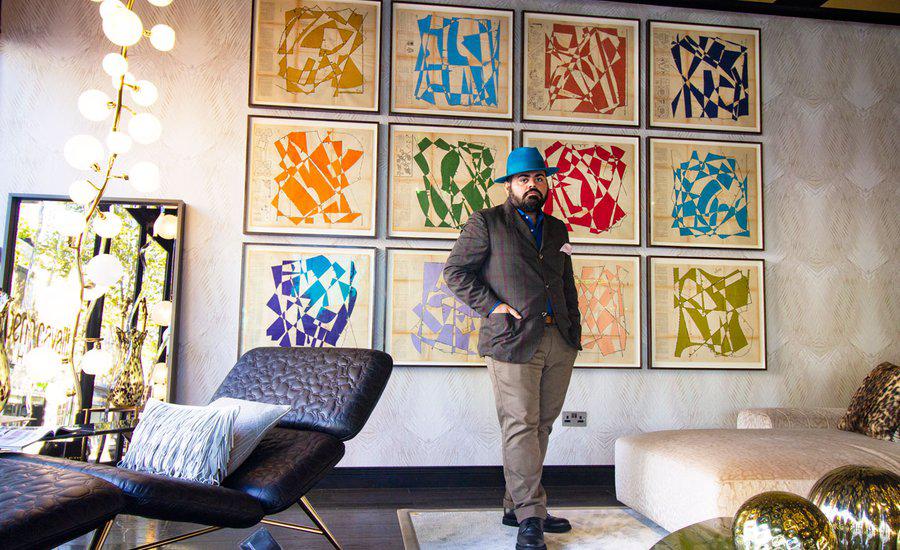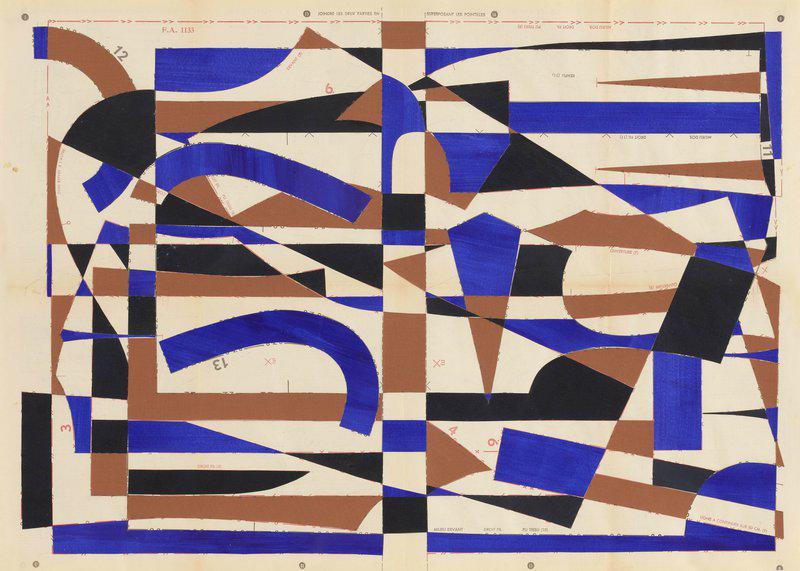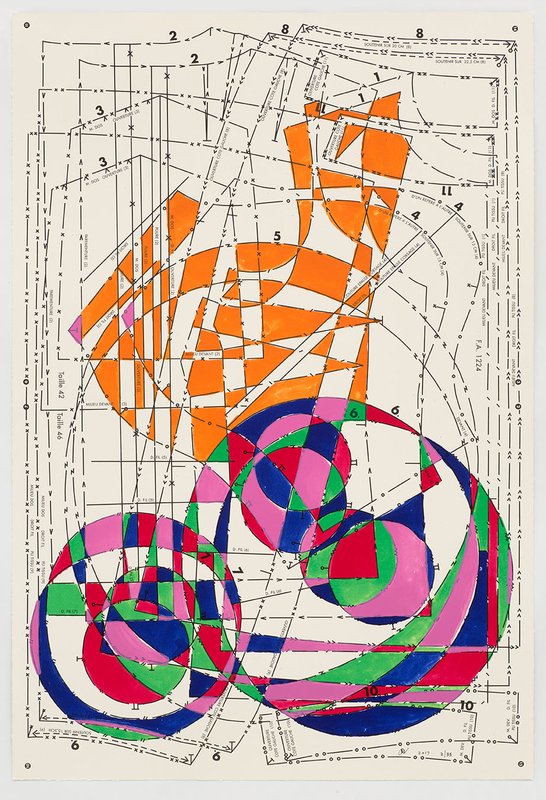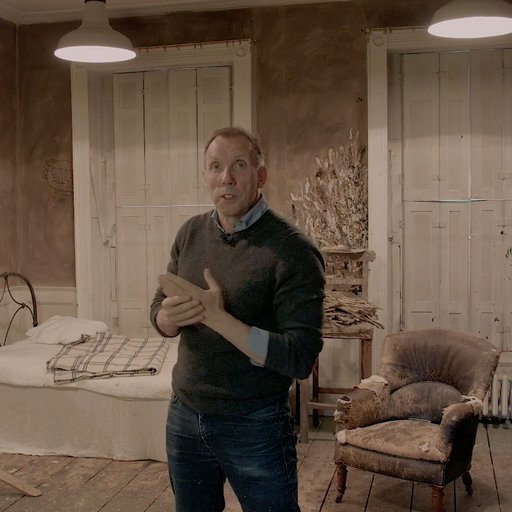"I’d like people to have a sense of memory and nostalgia, when they see my work," says London-based artist Hormazd Norielwalla. "I want the viewer to see something different every time they see an individual collage. I like the idea that my art ages with the viewer, and grows old over time."
Mumbai-born Narielwalla, whose practice encompasses original prints, sculpture, and collage, was inspired to become an artist while studying a Masters in Fashion Communications at Westminster University, London in 2006. It was during this time that he met a Savile Row tailor, who described to him how he would shred the bespoke paper tailoring patterns of customers who had died.
The idea of something so personal and detailed - yet ghostly - led Narielwalla to retrieve a set of the patterns, which inspired his first book, Dead Man's Patterns. The book attracted the attention of Sir Paul Smith who offered Narielwalla his first solo show.
Since then, the artist has built his practice around the extensive use of found materials which he uses to explore ideas around the body and the way we choose to formally clothe it. In 2014 Saatchi Art awarded Narielwalla its annual Showdown Art Prize. His work has been commissioned by the Crafts Council and has been featured in exhibitions at the Southbank Centre and The Royal Academy of Arts London. In 2018 The Victoria & Albert Museum commissioned 4 artworks based on the artist's personal hero, Frida Kahlo, for its blockbuster summer show.
Narielwalla's work is held in public and private collections worldwide, including The Ben Uri Museum Collection, the British Library; the National Art Library, the INIVA Collection; Fashion Institute of Technology, New York; and Parsons School of Art & Design, New York.
Hormazd invited Artspace into his studio to show what us what he's working on. We followed up the virtual visit by asking him a few extra questions about his work which you can read below the video. Hormazd Narielwalla's artist page on Artspace .
Who are the artists who turned you onto art or whose work still inspires you? Matisse’s Paper Cuts series has had a profound effect on me. Lygia Pape is a big reference point, especially her woodblock prints, and the use of line in her geometrical line compositions. Both Josef and Anni Albers too. It was wonderful to see Anni’s retrospective at the Tate, placing her textile work in a fine art context. Picasso, specifically his work on paper and ceramics, and Barbara Hepworth for her tenacity to establish herself as a female artist making monumental sculptures.
When I was writing my PhD, our room faced the Barbara Hepworth John Lewis commission, and I would look at it every day for 2 years, and it gave me a sense of direction. I also love the use of geometry and space in Carolina Herrera’s work. Also her life story interests me, as does Lee Krasner. My favorite works were when she tore up canvases and started to collage them back - I could see shapes resembling sewing patterns, which was interesting. And i admire Marcel Duchamp for his use of found material in innovative ways.
Hormazd Narielwalla - Jazz Composition No. 2, 2021
How do you embark upon a new work? In most works I have a general theme in mind, and then I let the patterns tell me what to do. Choosing color is very intuitive, and I often get asked if I have any constructive method. I don’t. As an artist I’m pursuing the thought of occupying space within my compositions, and achieving balance. Finding new shapes and forms and adding to the visual vocabulary that our eyes and minds are accustomed too. I’m also learning my art history as I make work, and have a dialogue with great artists and movements. Last year was the centenary of the Bauhaus movement and I decided to make works inspired by solid blocks, and shapes.
Hormazd Narielwalla - The Modernist Love Affair No.3 , 2017
I used gold stripe Japanese woodblock papers and combined them with hand printed Washi papers to represent the changing colours of daylight in a geometric format. In the lithograph pair The Mesopotamian Maze I was striving to find a figurative shape of a woman’s body, linking it to medical fertility sculptures in the British Museum, and the depiction of Cubist muses. Print is an exciting way of exploring painted colour. In the Satellite of Love series I abstracted a circle of lines, dots and numbers and in reverse made mono prints of dreamlike colours. The actual pattern is now in the negative, and your eye can see it because of the way the colour flows in the positive.
 Hormazd Narielwalla -
Desert Composition No.2
Hormazd Narielwalla -
Desert Composition No.2
Can you control where the work takes you? I always let the pattern tell me what to do. I do not sketch prior to making a piece. The only planning that goes into making an abstract piece is choosing a pattern base, the colours I would like to use, and my feelings. I then let my eyes take over and trust my judgment. I accept what the work will become in the end.
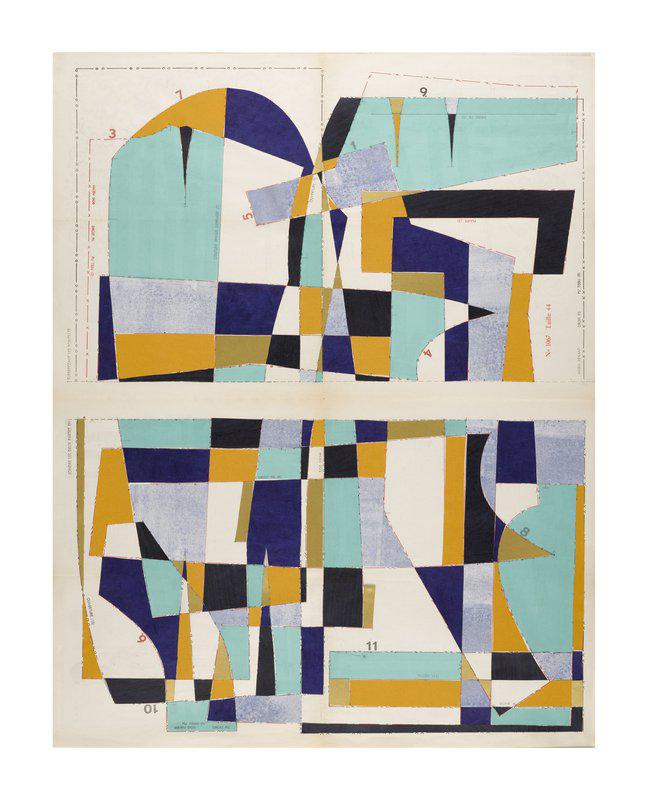 Hormazd Narielwalla -
Bauhaus Ben No.1
Hormazd Narielwalla -
Bauhaus Ben No.1
There have been times I’ve used a pattern twice, and the composition is completely different. It gave me an idea for a show one day to present 10 compositions using the same pattern, and showing how differently they can be depicted each time. My biggest challenge when making a work is to achieve balance. I know a work is finished when this is complete. The other quality that I have learned to acquire is patience - some of the collages are incredibly intricate, and they take an incredible amount of time to achieve.
Hormazd Narielwalla - The Mesopotamian Maze No.1 , 2017
What feelings do you get when you work? When I create work I feel a sense of calm, locked away in a space that temporarily allows me to escape, and shut the world behind. It’s a bit like therapy. Sometimes I’m able to block other thoughts and I’m purely focused in creating the work. That’s a wonderful feeling because on one hand I’m giving myself permission to in some sense fly, devoid from mundane worldly matters, and that there is purpose in doing so, as I’m left with a physical outcome in the form of an artwork.
What are you are working on right now? I’m currently working on a series titled - Rock Paper Scissors , where I deconstruct an original tailoring book (found on a trip to Seville in 2019), to record responses to journeys I made to St. Ives to visit the studio and garden of the artist Barbara Hepworth. Her main inspiration was derived from the human figure and the landscape which made me think of many parallels in my work. Seen in sequence, the 80 tiny collaged book-pages that constitute Rock, Paper, Scissors , reveal the play of the artist’s thoughts.
Hormazd Narielwalla - Mono Compostion No.12, 2021
The series takes its title from a children’s game that pits rock, paper and scissors against each other in a play of chance in which no one element can ultimately gain precedence. In this extended sequence of miniature art works, paper stands in for rock, just as an old suit pattern can represent a man.
Working with parameters defined by the original geometric pattern diagrams, the overlaid collaged elements echo and pay homage to Hepworth’s sculptural forms. Cut ovoid apertures reiterate a signature element of the sculptor’s work as I extend ideas about negative and positive space.
 Hormazd Narielwalla -
Negative Space, 2013
Hormazd Narielwalla -
Negative Space, 2013
How has your working day changed during lockdown? This is normally a quiet period for me, so little has changed, other than heightened anxiety of seeing pain and loss on the news. I’ve decided to look again at a project that I have kept on the back burner. I found beautiful and fairly large plates of black and white photography of flowers from a French publisher in the early 1900s. I do not work with photography, so this is a new material to explore. Hormazd Narielwalla's artist page on Artspace .
RELATED STORIES
What to Say About Your New Jenny Holzer Print (or Skateboard or LED)
What to Say About Your New KAWS Print (or Sculpture or Silkscreen)
What to Say About Your New Katherine Bernhardt Print
What to Say About Your New Frank Stella Print
What to Say About Your New David Salle Print











